Table of Contents
One of the most effective ways to boost your sales as an online business is through ecommerce conversion rate optimization (CRO). This process involves analyzing your website’s user experience and making strategic changes to encourage more visitors to make a purchase.

There are a number of factors that can impact your ecommerce conversion rate optimization, including the design and layout of your website, the quality of your product descriptions and images, and the ease of your checkout process. By optimizing each of these areas, you can create a more seamless and enjoyable shopping experience for your customers, which can ultimately lead to higher sales and revenue for your business.
However, ecommerce conversion rate optimization is not a one-time fix. It’s an ongoing process that requires constant monitoring and adjustment to ensure that your website is always performing at its best. In this article, we will explore some of the key strategies and best practices for ecommerce conversion rate optimization, so you can start seeing results and growing your business.
Understanding Ecommerce Conversion Rate Optimization
In ecommerce, conversion rate refers to the percentage of website visitors who complete a desired action, such as making a purchase or filling out a form. A high conversion rate indicates that your website is effectively persuading visitors to take action, while a low conversion rate suggests that there may be room for improvement in your website design, messaging, or user experience.
Conversion rate optimization (CRO) is the process of improving your website’s ability to convert visitors into customers. By analyzing user behavior and testing different design and messaging strategies, you can identify the most effective ways to encourage visitors to take action and increase your conversion rate.
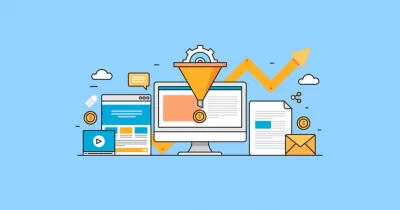
Improving your conversion rate can have a significant impact on your ecommerce business. Even a small increase in conversion rate can lead to a significant increase in revenue, as more visitors become customers and make purchases on your website.
Industry Benchmarks
Conversion rates can vary widely depending on your industry, target audience, and website design. However, there are some general benchmarks that can be useful for comparing your website’s performance to others in your industry.
According to a study by BigCommerce, the average conversion rate for ecommerce websites is around 2-3%. However, top-performing websites can achieve conversion rates of 10% or higher.
It’s important to keep in mind that these benchmarks are just a starting point, and your website’s performance may be influenced by a wide range of factors. By tracking your conversion rate over time and experimenting with different strategies, you can identify the most effective ways to improve your website’s performance and achieve your business goals.
Data Analysis and Tracking
To effectively implement ecommerce conversion rate optimization, you need to track and analyze data regularly. This will help you identify areas that need improvement and make data-driven decisions to increase your sales. In this section, we’ll discuss how to set up analytics and interpret data.
1. Setting Up Analytics
The first step in data analysis is setting up analytics tools such as Google Analytics, Hotjar, or Kissmetrics. These tools will help you track user behavior, traffic sources, and other metrics that are critical to improving your conversion rate.
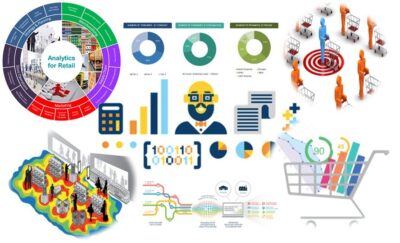
To set up analytics, you need to add tracking codes to your website. This will allow analytics tools to collect data and generate reports. You can also set up conversion tracking to measure the effectiveness of your marketing campaigns.
2. Interpreting Data
Once you have set up analytics, you need to interpret the data to identify areas for improvement. Some of the key metrics to track include bounce rate, exit rate, time on site, and conversion rate. You can use these metrics to identify pages that need optimization and make data-driven decisions to improve your conversion rate.
For example, if your bounce rate is high, it may indicate that your website is slow or difficult to navigate. You can use this information to optimize your website speed and improve user experience. Similarly, if your exit rate is high on a particular page, it may indicate that the page is not relevant to users. You can use this information to optimize the page content and improve its relevance.
Impact of Website Design and UX on Ecommerce CRO
When it comes to ecommerce conversion rate optimization, website design and user experience play a crucial role. A well-designed website with a good user experience can significantly improve your conversion rates. Here are some factors to consider when optimizing your website design and user experience.
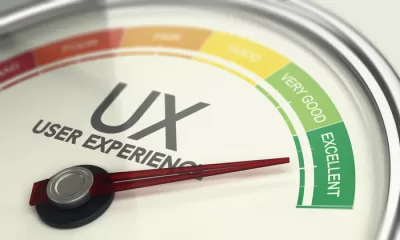
3. Navigation and Layout
Your website’s navigation and layout should be simple and easy to use. Visitors should be able to find what they’re looking for quickly and easily. A cluttered and confusing layout can lead to frustration and high bounce rates. Consider using clear and concise labels for your navigation menu items. Use a clear hierarchy of headings and subheadings to organize your content.
4. Mobile Optimization
With the increasing use of mobile devices, it’s essential to optimize your website for mobile users. Your website should be responsive and adapt to different screen sizes. Make sure your website loads quickly on mobile devices. Use larger fonts and buttons to make it easier for users to interact with your website on smaller screens.
Both website design and user experience are critical factors to consider in ecommerce conversion rate optimization. By focusing on navigation and layout and mobile optimization, you can improve your website’s user experience and ultimately increase your conversion rates.
Improving Checkout Process
In ecommerce CRO, improving the checkout process is essential. A complicated checkout process can lead to a significant amount of cart abandonment, which can result in lost sales. Streamlining the checkout process and reducing cart abandonment can address such issues, improve your conversion rates, and increase your revenue.
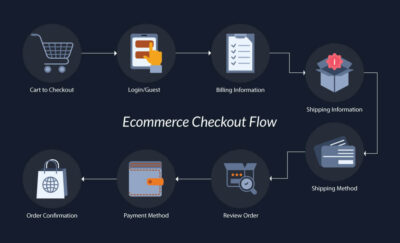
5. Streamlining Checkout
One of the most effective ways to streamline the checkout process is to reduce the number of steps required to complete a purchase. This can be achieved by simplifying the checkout form and removing any unnecessary fields. You can also offer guest checkout options, which allow customers to make purchases without creating an account.
Another way to streamline the checkout process is to provide customers with clear and concise instructions. This can include adding progress indicators, such as a progress bar, to show customers how far along they are in the checkout process. You can also use tooltips and pop-ups to provide customers with additional information about each step of the checkout process.
6. Reducing Cart Abandonment
Cart abandonment is a significant issue for many ecommerce businesses. During ecommerce conversion rate optimization, you need to identify the reasons why customers are abandoning their carts. This can be done by analyzing your website’s analytics data and conducting customer surveys.
Once you have identified the reasons for cart abandonment, you can take steps to address them. For example, if customers are abandoning their carts because of unexpected shipping costs, you can offer free shipping or include shipping costs in the product price. If customers are abandoning their carts because of a complicated checkout process, you can simplify the checkout process and provide clear instructions.
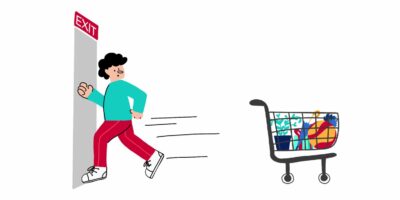
In other words, improving the checkout process is a critical aspect of ecommerce conversion rate optimization. Streamlining the checkout process and reducing cart abandonment is an effective strategy to improve your conversion rates and increase your revenue.
Personalization and Customer Engagement
Personalization and customer engagement are the gold standard and crucial factors to consider in ecommerce conversion rate optimization. By tailoring your website’s content to each individual customer, you can increase the chances of them making a purchase. Here are two ways to personalize your website and engage your customers:
7. Targeted Recommendations
One way to personalize your website is by providing targeted recommendations to your customers. By analyzing their browsing and purchase history, you can suggest products that are relevant to their interests. This not only increases the chances of them making a purchase but also improves their overall shopping experience.
To effectively provide targeted recommendations, consider using machine learning algorithms. These algorithms can analyze large amounts of data and provide accurate product recommendations to each individual customer. You can also use customer feedback to further improve your recommendations and increase customer satisfaction.
8. Loyalty Programs
Another way to engage your customers is by offering loyalty programs. By rewarding customers for their purchases and engagement with your brand, you can increase customer retention and encourage repeat purchases.
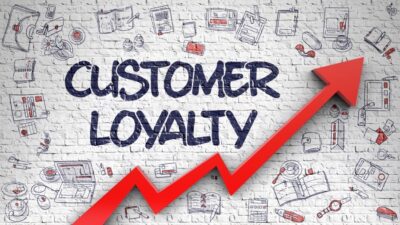
Some effective loyalty program strategies include offering exclusive discounts, providing personalized rewards, and creating a points system that customers can accumulate and redeem for rewards. It’s important to regularly communicate with your customers about their loyalty program status and offer incentives to keep them engaged.
A/B Testing and Experimentation
A/B testing is a crucial component of ecommerce conversion rate optimization. It involves comparing two versions of a webpage or element on a webpage to determine which version performs better in terms of conversions. By testing different variations of a webpage, you can identify which changes have the greatest impact on conversion rates, and make data-driven decisions to optimize your website for better results.
9. Creating Effective Tests
When creating A/B tests, it’s essential to have a clear hypothesis and a well-defined goal. You should start by identifying the specific element you want to test, such as the headline, call-to-action (CTA), or product image. Then, you can create different variations of that element and test them against each other.
It’s crucial to only test one element at a time to ensure that you can accurately determine which change had the greatest impact on conversions. Additionally, you should ensure that your test results are statistically significant, meaning that there is a high degree of confidence that the results are not due to chance.
10. Analyzing Test Results
Once you’ve run your A/B tests, it’s essential to analyze the results to determine which variation performed better. You should look at metrics such as conversion rate, bounce rate, and time on page to determine which version of the webpage performed better.
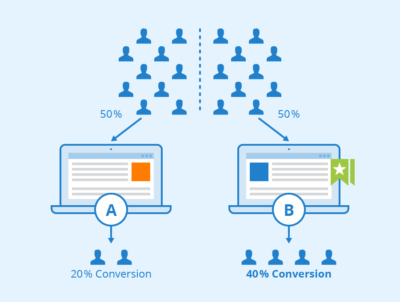
It’s also crucial to consider the context of your test results. For example, if your test was run during a holiday season, the results may not be representative of typical user behavior. By considering the context of your test results, you can make more informed decisions about how to optimize your website for better results.
Ecommerce Conversion Rate Optimization Tools
To effectively optimize your ecommerce conversion rate, you need the right tools. Here are some of the most effective tools you can use to achieve your ecommerce conversion optimization goals:
11. Heatmaps and Session Recordings
Heatmaps and session recordings are powerful tools that help you understand how your visitors interact with your website. With heatmaps, you can see which areas of your site get the most clicks, where visitors are spending the most time, and which elements are being ignored. Session recordings, on the other hand, allow you to watch real-time recordings of your visitors’ sessions on your site, giving you invaluable insights into their behavior.
Some of the best heatmap and session recording tools include:
- Hotjar
- Crazy Egg
- Mouseflow
12. Landing Page Optimizers
Landing pages are crucial for ecommerce conversion rate optimization, and landing page optimizers can help you create effective landing pages that convert. These tools allow you to create, test, and optimize landing pages to ensure that they are as effective as possible.
Some of the best landing page optimizers include:
- Unbounce
- Instapage
- Leadpages
Using these tools can help you optimize your ecommerce conversion rate and increase your sales and revenue.
Following the provided tips can help you increase the return on investment of your ecommerce business. The strategies are practical and represent current trends and practices in the ecommerce space. However, due to the technical aspects of some of the strategies, you can always engage a digital marketing agency to help implement the process and achieve ecommerce conversion rate optimization.







